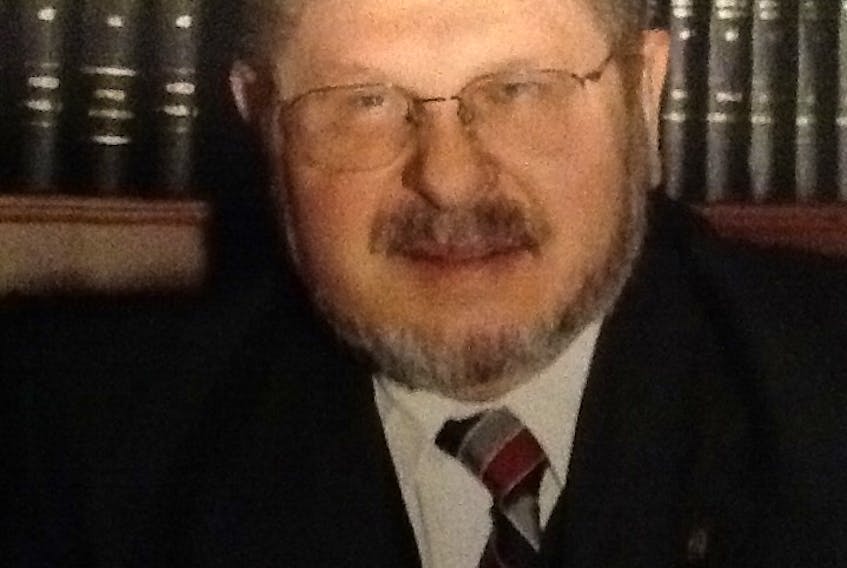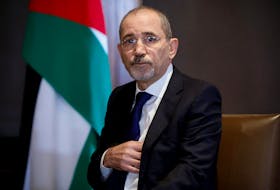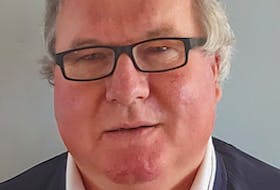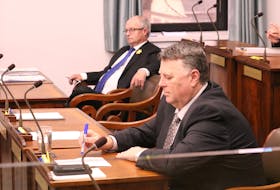There was a time when almost everyone knew somebody who had died or had been crippled by the polio virus. Now, only someone older than 65 will have had that experience.
These days, no one is aware of the fact that whole schools were closed whenever there was a polio outbreak.
An example: In 1916, 27,000 people were paralyzed in New York City alone. It was 64 years ago that Dr. Jonas Salk's vaccine was introduced.
For the last 40 years there have been no new polio cases in the U.S. and Canada because of vaccination.
By 1994 the rest of the Americas was totally polio free. Not so in the rest of the world, especially Asia and Africa. The polio virus is easily transmitted, especially in countries with poor sanitation and unclean water.
The virus attacks the nervous system, which in turn affects the muscles, leading to paralysis or even death. It can affect persons of all ages, but mostly young people from babies to teenagers. It does not discriminate.
One of its most famous cases was President Theodore Roosevelt.
By 2002, 500 million children were immunized in 93 countries, making 70 countries polio free. At present, that number has increased to 2.5 billion, thereby reducing the incidence of polio by 99.9 per cent.
Only two countries remain where polio cases are still happening: Pakistan and Afghanistan.
In 1988 there were still 350,000 case worldwide.
There were only 33 new cases in 2018.
All of that means that 500,000 cases of polio are prevented every year. It is estimated that 18 million human beings are healthy, walking and working, who would otherwise be dead or paralyzed.
The goal is to make the world polio-free.
How did all this come about? To a very large extent, because of Rotarians around the world. Soon after Rotary was founded as the world's first service club in 1905, many clubs decided to help polio victims ("crippled children" in those days), providing braces, crutches, wheelchairs and helping with medical and transportation expenses.
Locally, the Amherst Club's camp at the mouth of the Tidnish River, became known as the "Crippled Children's Camp."
Springhill Rotarians sponsored clinics for many years.
In 1955 Dr. Salk's vaccine was licensed.
In 1960 Dr. Sabine produced an oral vaccine.
In 1972 talk started among the leaders of Rotary International that the organization should concentrate to provide vaccine in places where they couldn't afford it in order to lessen the impact of the disease. Rotary started the 3H program, which soon grew into Polio Plus.
By this time another world-wide immunization had resulted in the total eradication of smallpox. That gave Rotary the incentive to use its efforts world-wide not only to immunize children, but to eradicate the disease once and for all.
In 1979 the Rotary Foundation spent $760,000 in a five-year partnership with the government of the Philippines to immunize 5.3 million children.
That country was picked, because it alone represented 45 per cent of all of Asia's polio cases and 74 per cent of its polio-related deaths.
After that experience, Rotary started to work together with the World Health Organization and other United Nations Agencies. It lobbied governments around the world to adopt the complete eradication of the polio virus as a goal.
That effort resulted in the Global Polio Eradication Initiative. Rotarians around the world started to raise money and thousands volunteered at immunization clinics. Ten million children received the magic drops in just one immunization day in India.
In 2012, all of India was declared polio free. That meant at least 120,000 children were saved from paralysis or death in just that one country alone. So much has been achieved, but a great deal more needs to be done.
Billions in US dollars have been spent. Rotarians have contributed US $1.6 billion and have committed $300,000 per year more until the job is done.
Bill Gates has been inspired by Rotary and his foundation matches two to one every Rotary dollar raised.
The polio eradication campaign has grown into an effective infrastructure for health care delivery. It concerns itself with other health-related issues such clean water, improved sanitation and malnutrition.
It administers Vitamin A drops which have prevented 1.25 million deaths. Polio health care workers are confronted with other diseases (malaria, Ebola, yellow fever) , which cannot be ignored.
In addition, the initiative involves helping polio survivors with skills training or to start a small business. All of that justifies the "PLUS" in Polio Plus. It is estimated that it will take another $4.2 billion to achieve that second historic milestone in human health history: the complete and irreversible eradication of the polio virus, in all its forms.
It would be worth it, including in cold, economic terms. A polio-free world will save the global economy US $40 billion to $50 billion in health costs within the next 20 years.
Morris Haugg is a member of the Amherst News Community Editorial Panel









